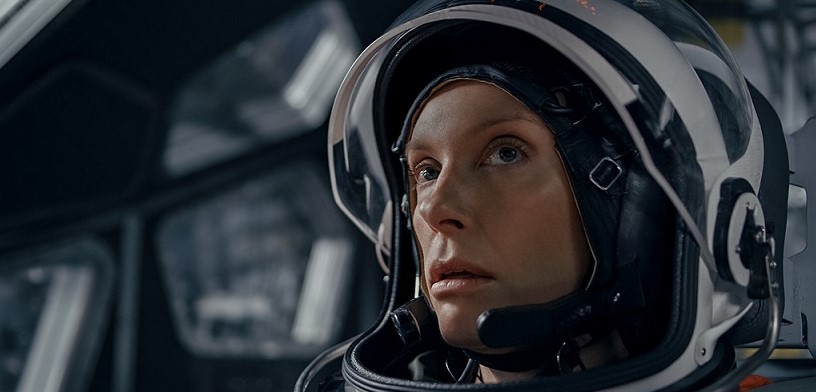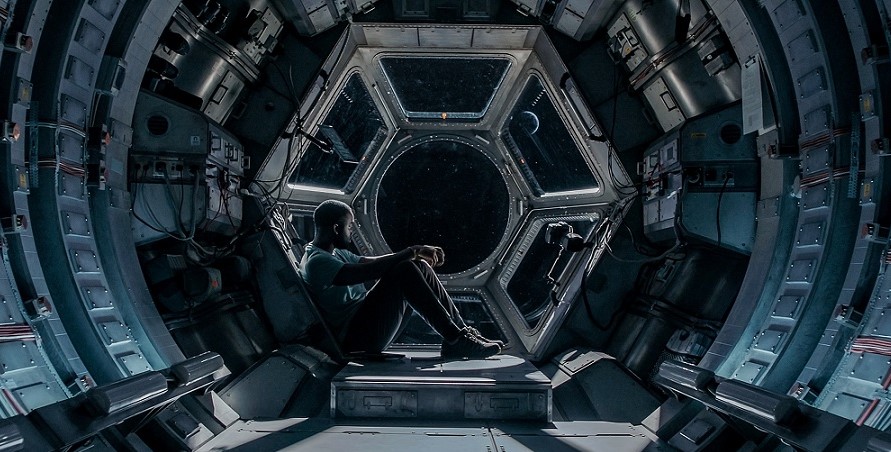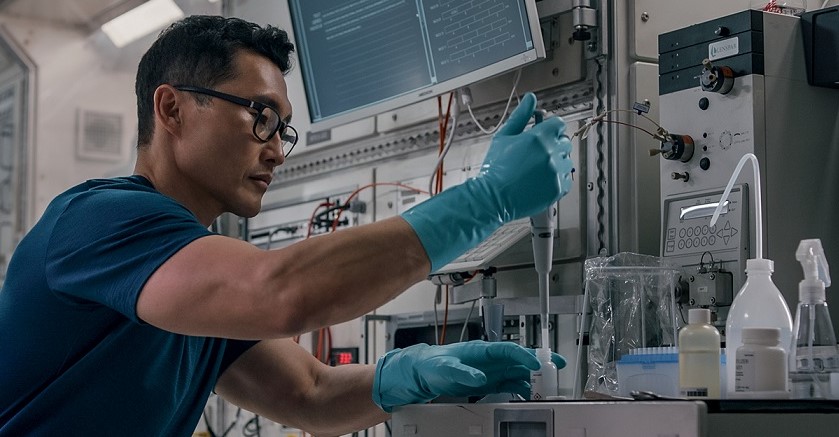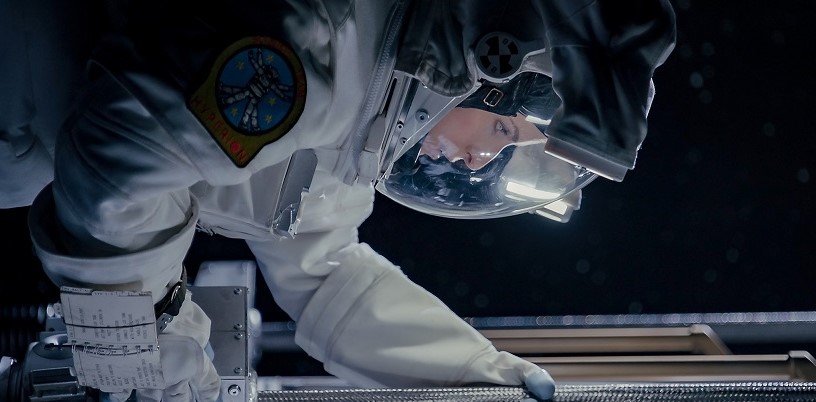
This film is currently available to stream on Netflix.
Space-travel and science-fiction movies have had a fairly common (if unintentional) message in recent years… essentially, that something will most certainly go horribly wrong and require extreme sacrifices. It leaves one with the impression that exploring the unknown may not actually be worth all the trouble. At least, that’s the case after watching features like Gravity, Ad Astra, Life, The Martian, Interstellar, Sunshine and even The Midnight Sky. Stowaway is yet another example of this trend. It’s a familiar story about a troubled mission that displays acts of self-sacrifice for the greater good. However, the end results feel a bit flat and the film doesn’t quite match up to similarly-themed efforts.

Commander Marina Barnett (Toni Collette), physician Zoe Levenson (Anna Kendrick) and botanist David Kim (Daniel Dae Kim) are astronauts heading for Mars for scientific research. After successfully launching and leaving Earth’s orbit, they discover launch technician Michael Adams (Shamier Anderson) unconscious in one of the spacecraft vents. Truth be told, he falls through the ceiling, causing damage to life support systems in the process. The astronauts treat the man, but soon realize that there isn’t enough oxygen to support all of them on the journey. The group brainstorm and try to solve the issue, but further setbacks leave them with dwindling resources and tough decisions to make.

The concept is full of dramatic potential, particularly as the team discuss disturbing issues and options as things become dire. And like other titles with a similar plotline, one potential solution is incredibly treacherous. In order to secure extra breathable air, some of the characters must volunteer to suit up and shimmy along a suspended metal line to a platform far away from the main craft. This particular sequence is exciting and serves as a highlight. It doesn’t involve fast-cutting, but instead focuses on individuals moving slowly towards their goal. The technique actually extends the scene and maximizes the importance of every gesture, adding tension and unease to the experience.
However, some of the other elements aren’t nearly as effective. In order to emphasize the isolation of the characters, conversations between the astronauts and ground control on Earth quickly turn into one-sided discussions. We only hear the leads quietly talking into their mics. It’s an interesting idea, but ends up curtailing some of the suspense. It might have added more anxiety to hear the intense concern on the other side of the line. The movie also is a little vague about how the stowaway ended up onboard. Instead, the characters simply accept the situation and focus on other problems. It feels like an important story point that isn’t addressed or maximized.

Additionally, one wishes that the characters onboard weren’t so good-natured. The movie could have used a little more panic on the part of the principal characters given the extreme situation. One expects tempers to flare and for self-preservation instincts to kick in. A team member does speak to Michael about the strain he is putting on everyone’s lives and makes a suggestion as to how he can help solve the problem, but the discussion doesn’t lead to significant conflict. Knowing that a death would extend the lives of others onboard, you would expect everyone to be sleeping with an eye open. But on the whole, the crew behaves nobly under the circumstances. It’s admirable to see, but it doesn’t make for a nerve-wracking show.

The cast are fine and the movie features an appropriately tense finale, but isn’t nearly as gripping or stress-inducing as it could have been. Instead of amplifying the life-threatening ramifications of the situation and seeing its psychological effects on the astronauts, the movie takes an ill-advised low-key and muted approach to the material. In the end, Stowaway ends up feeling like an also-ran in the space-disaster movie genre.


